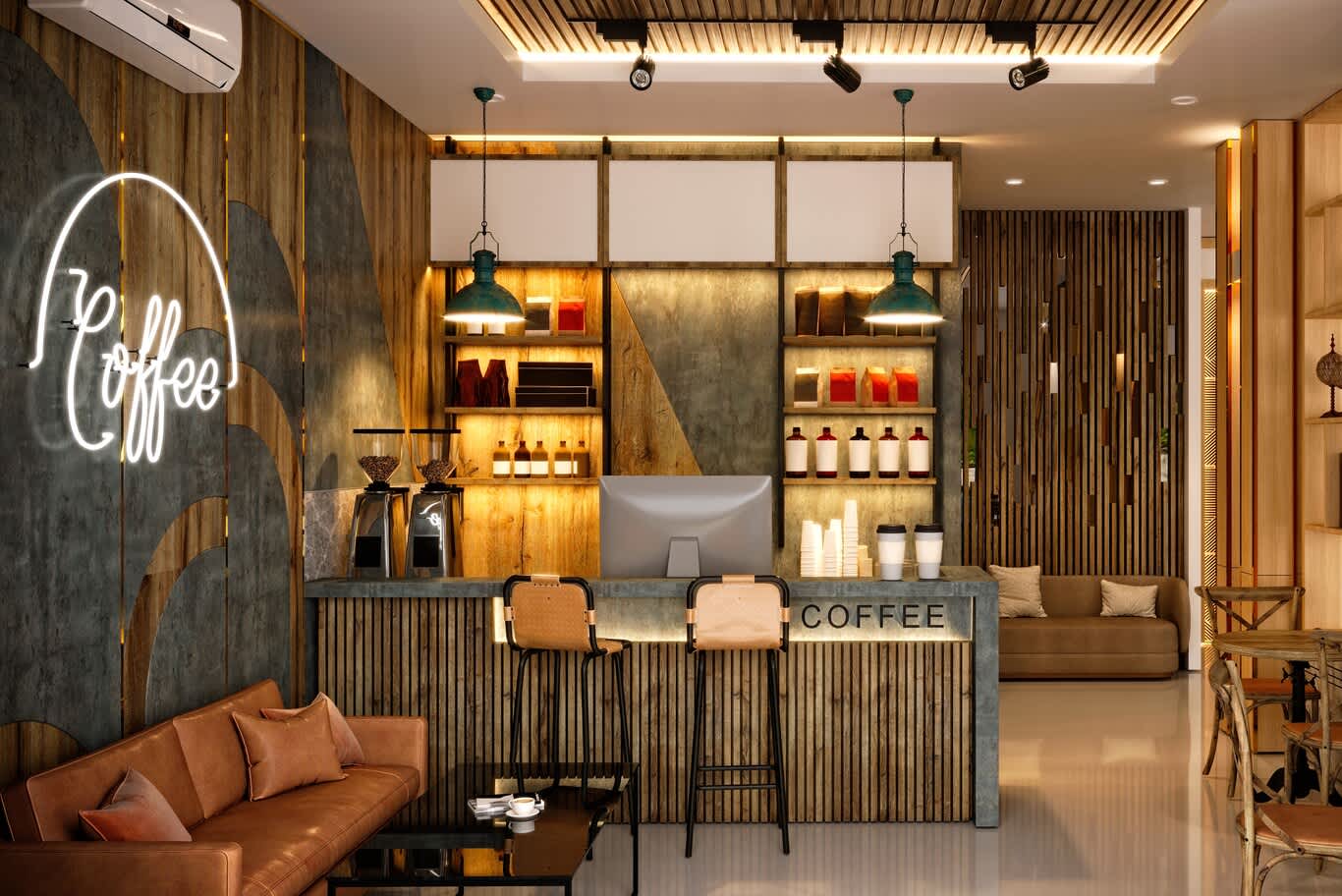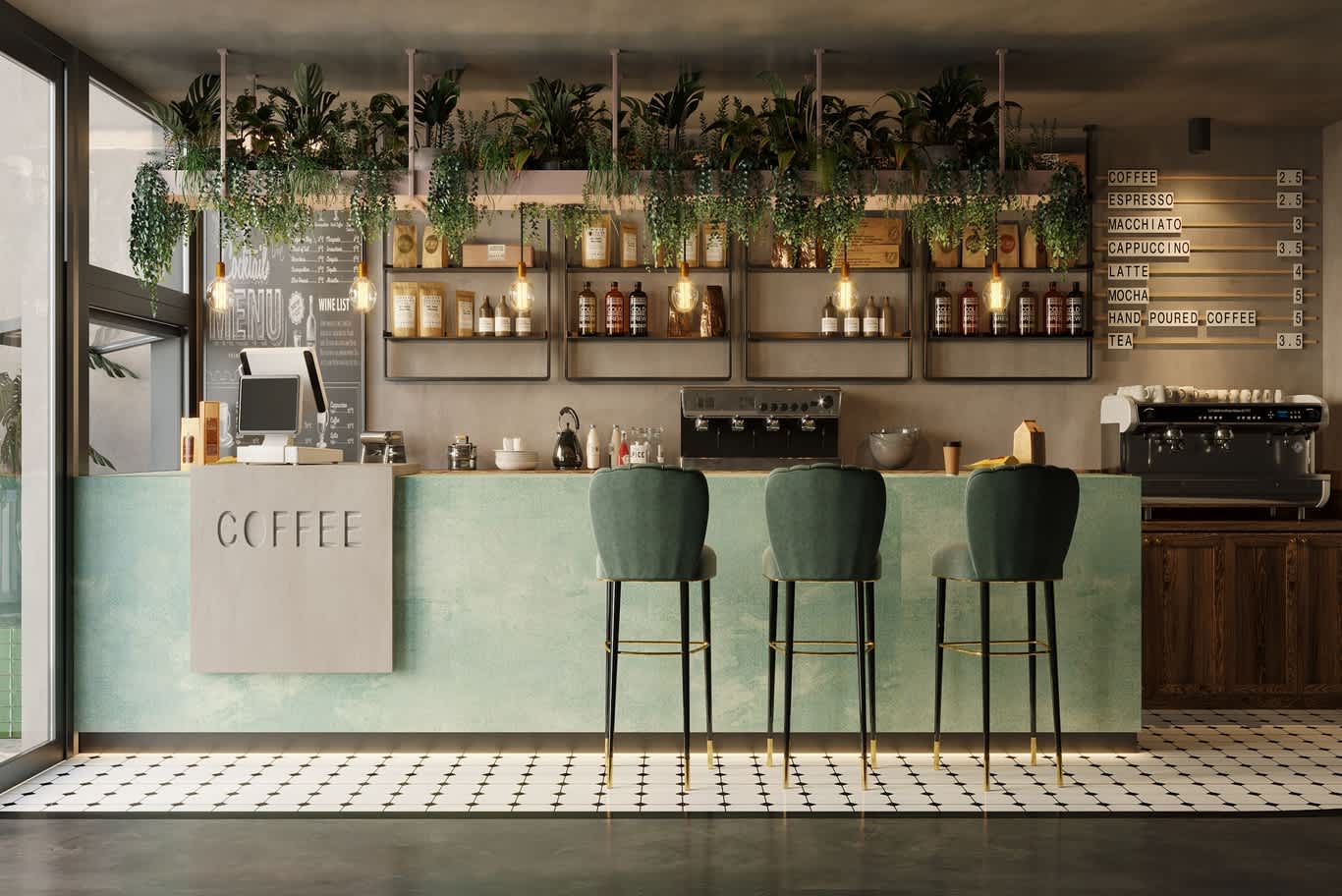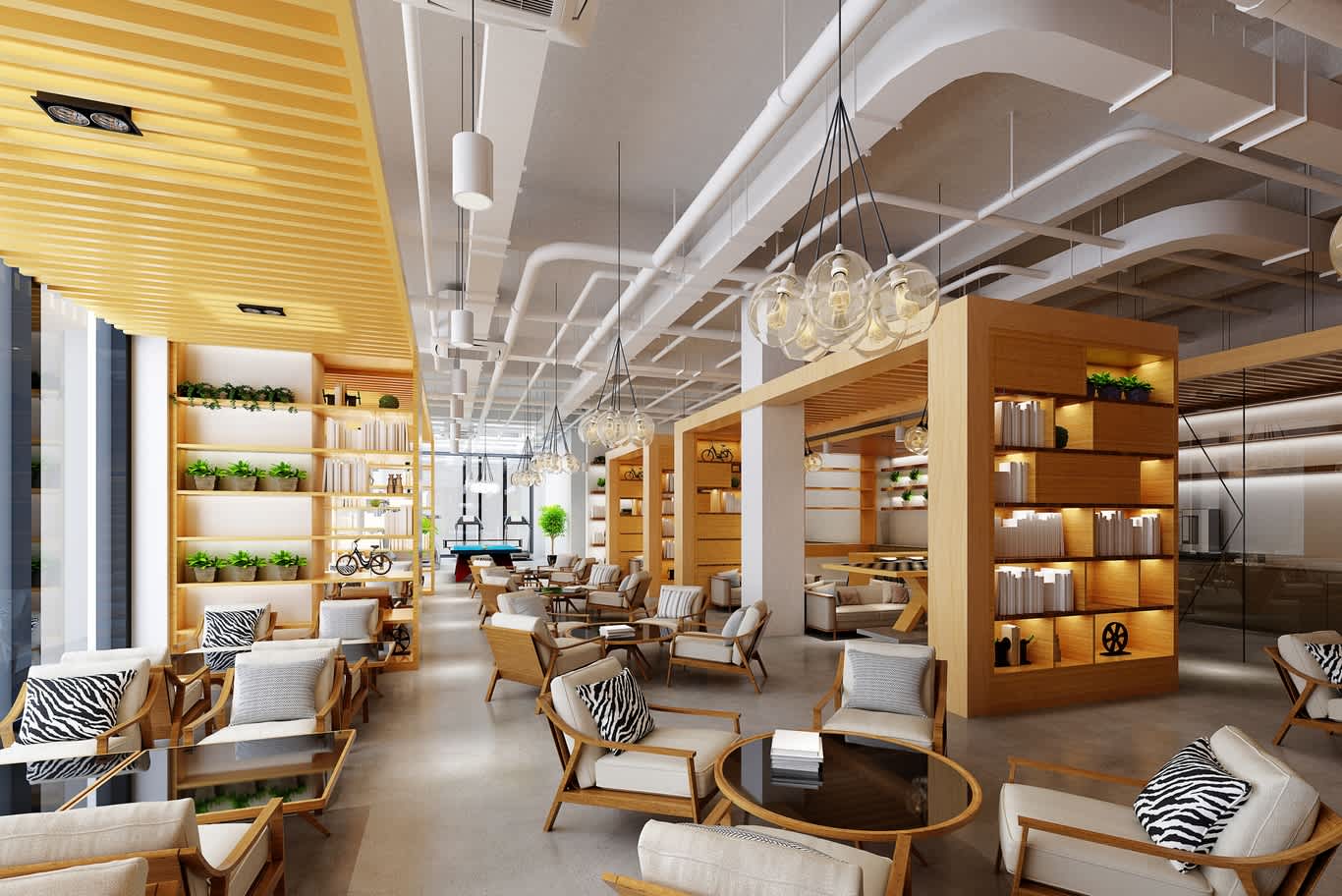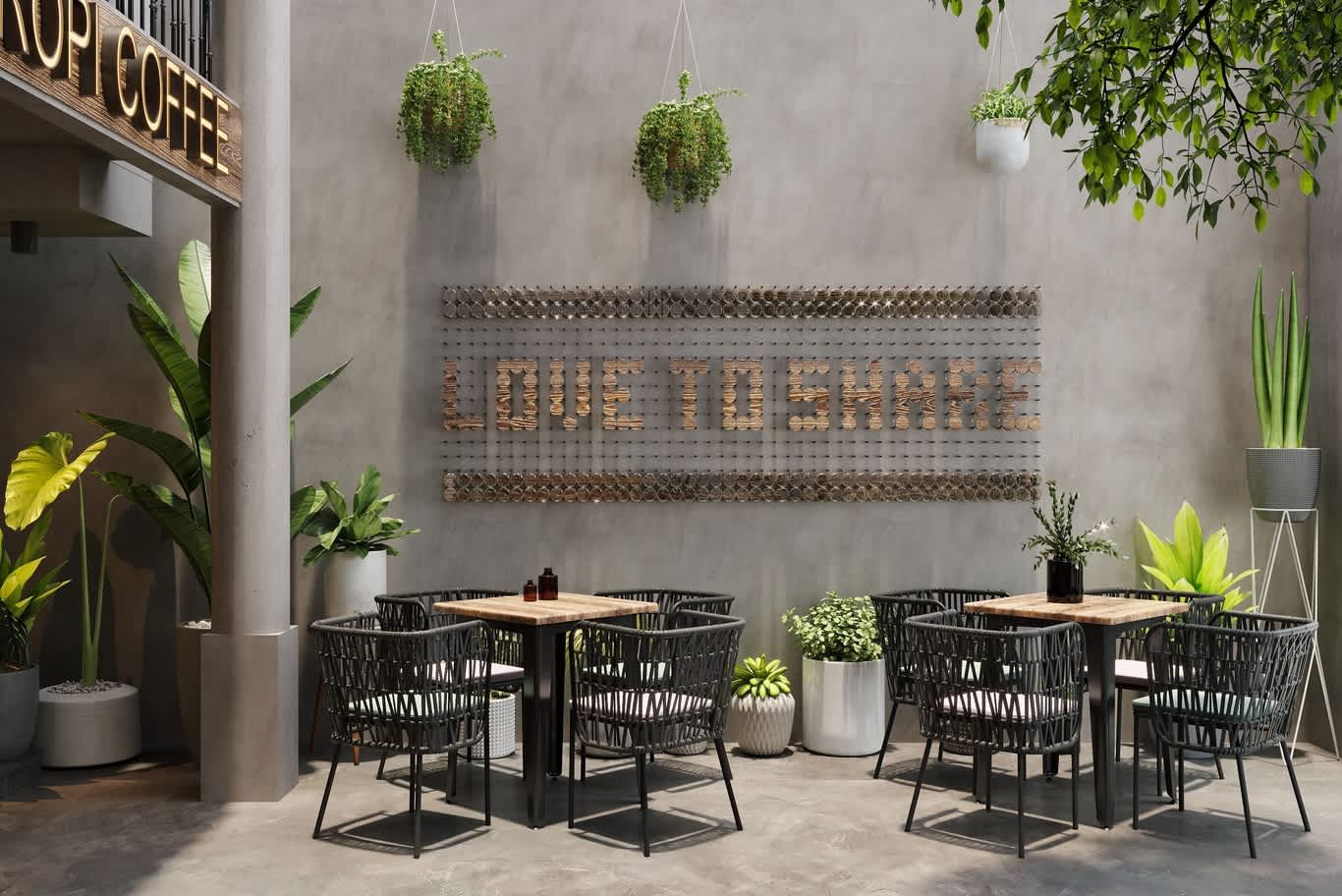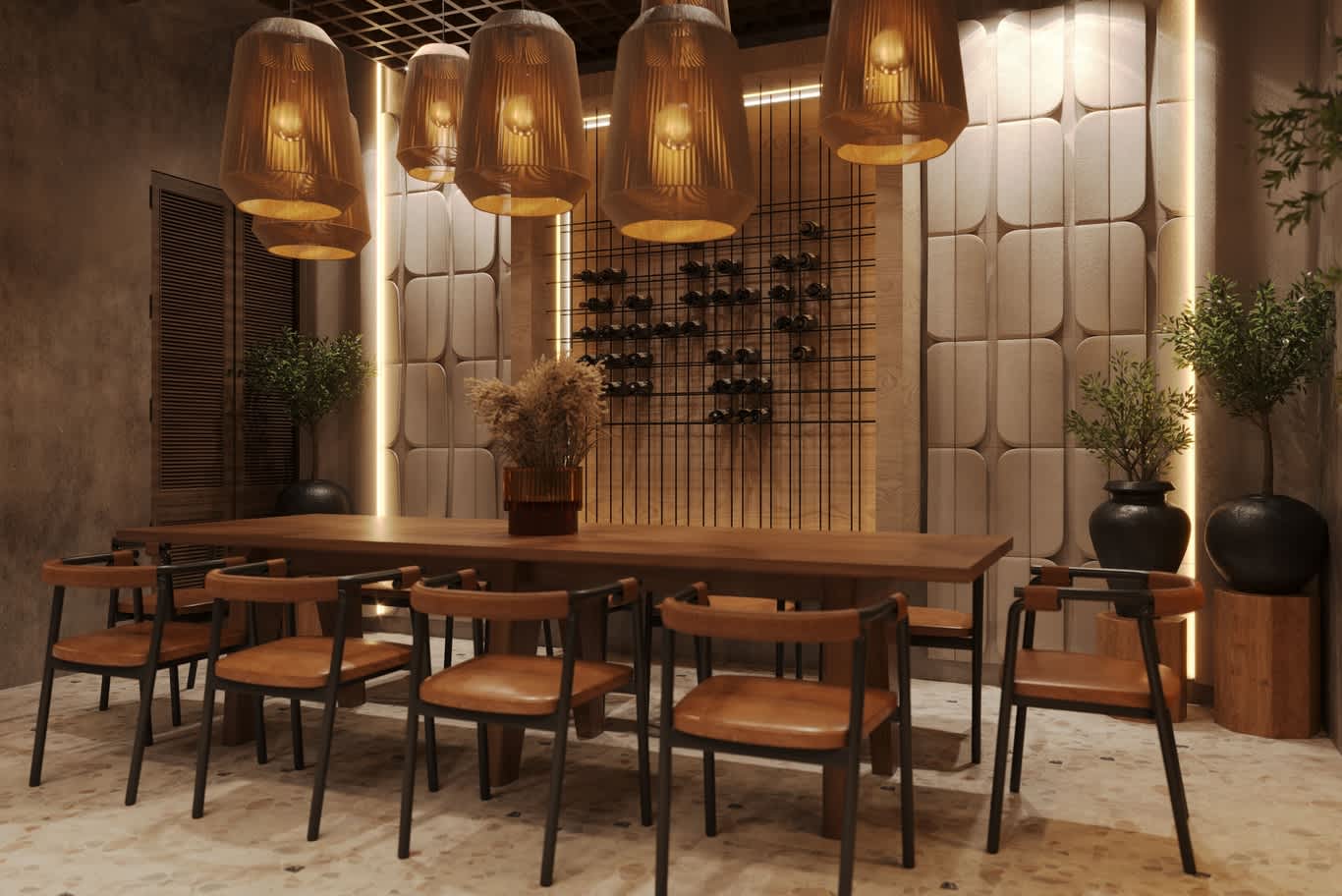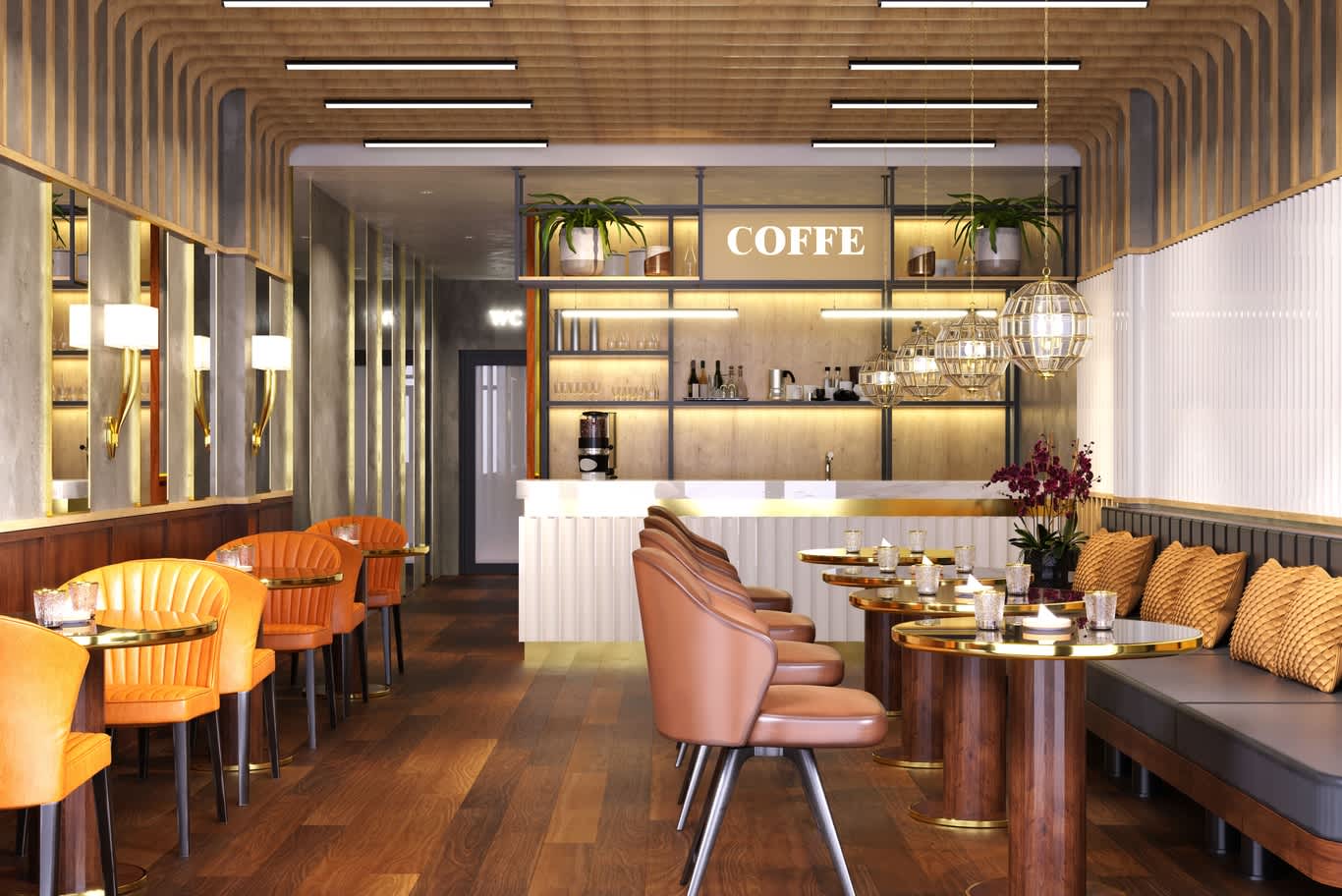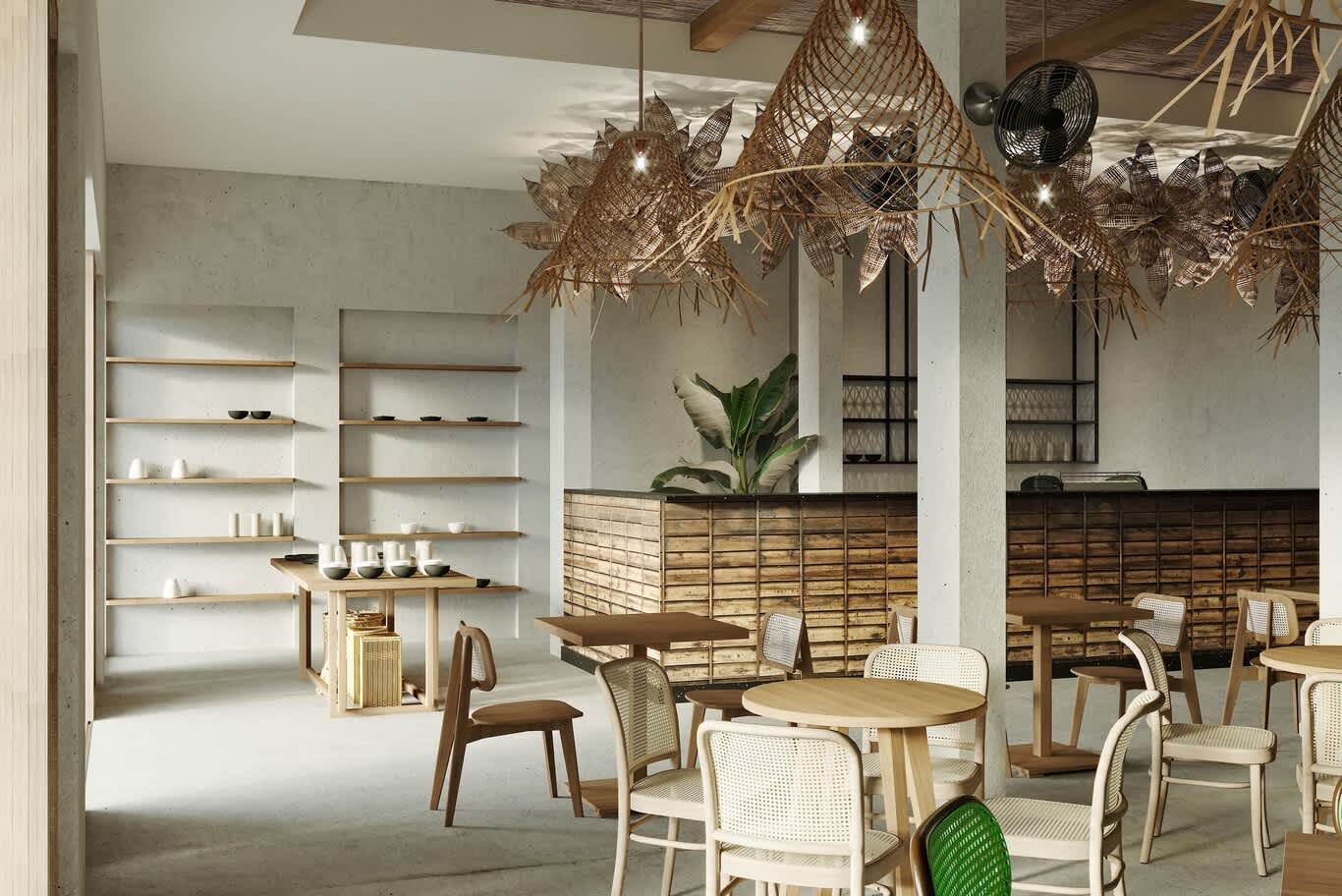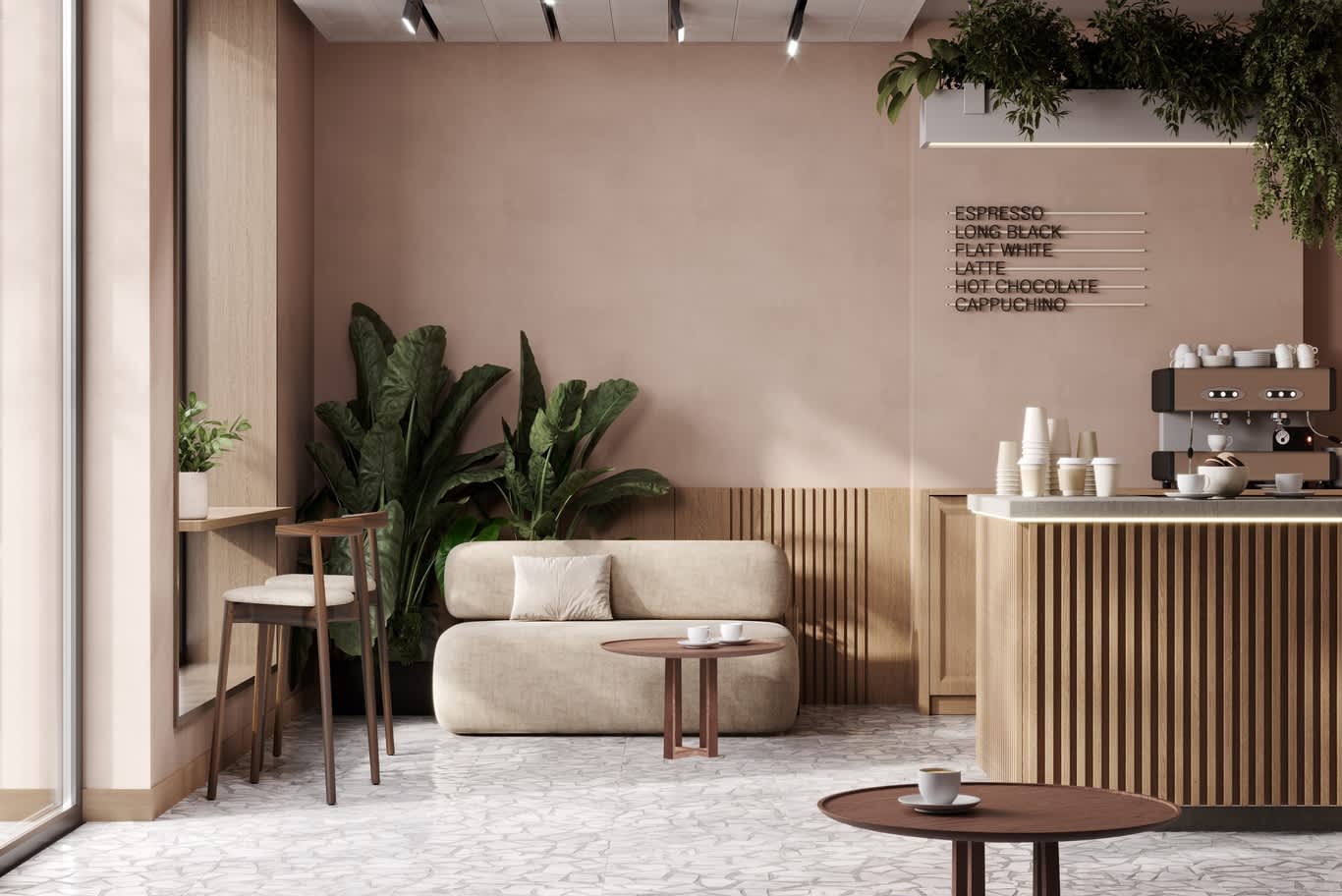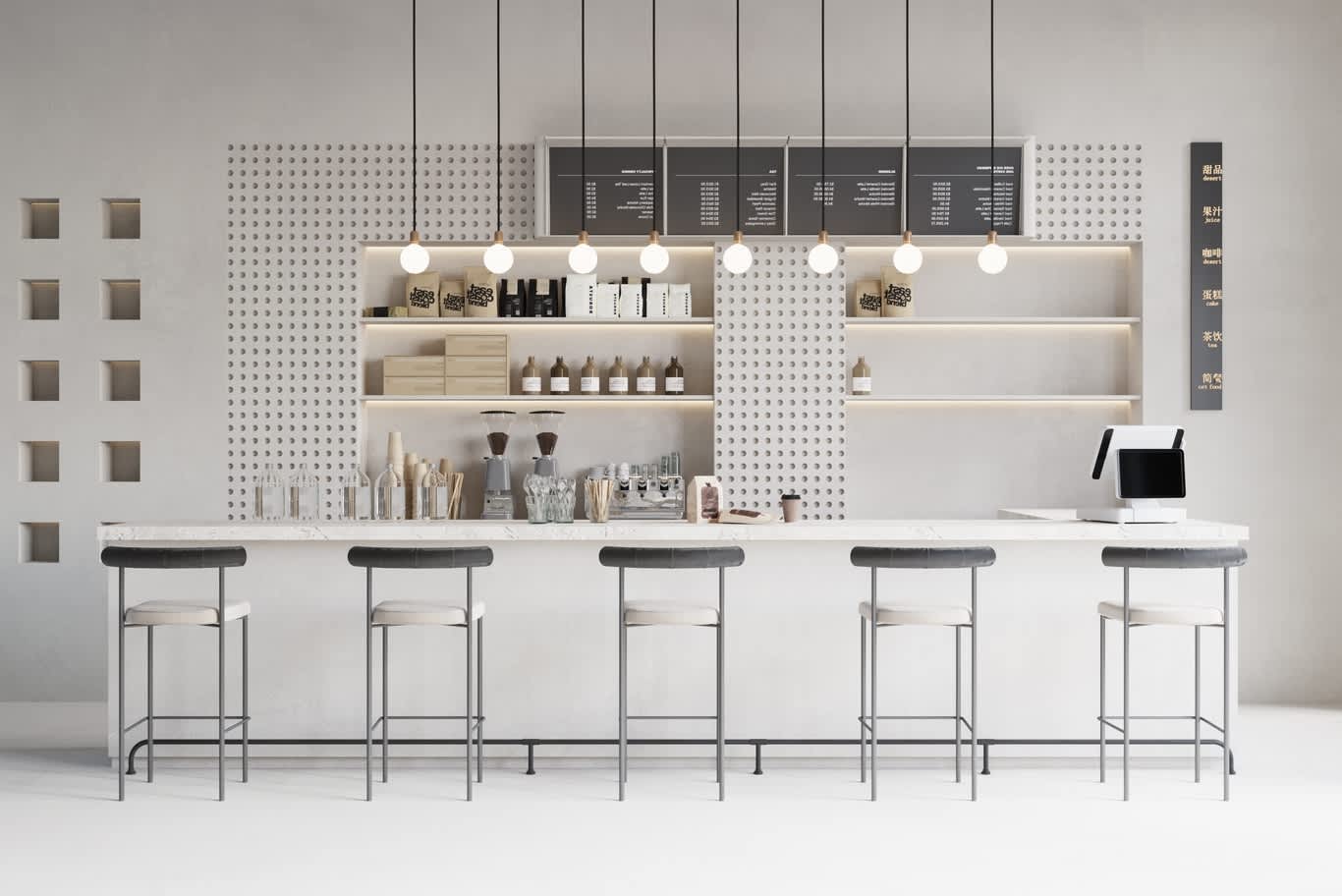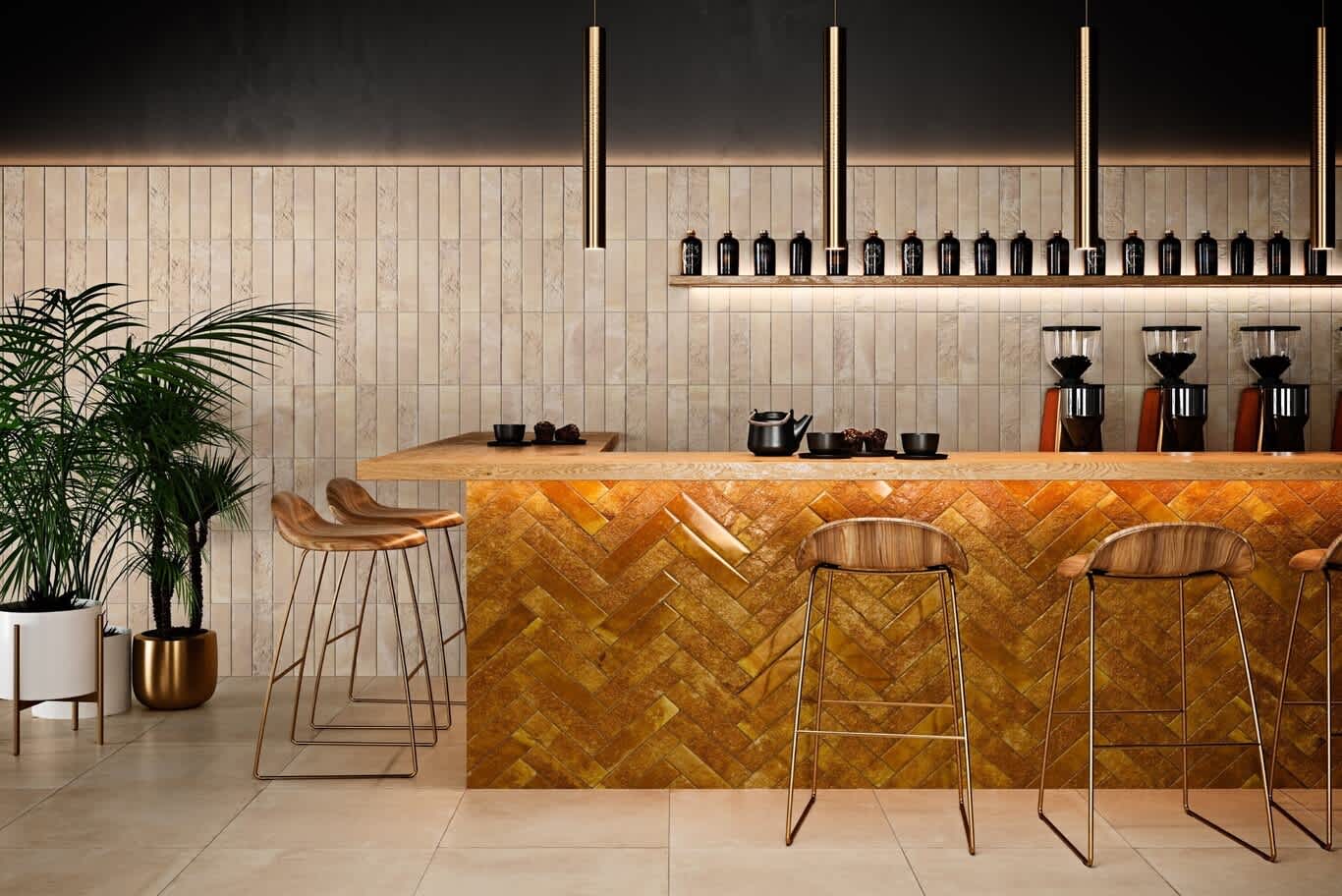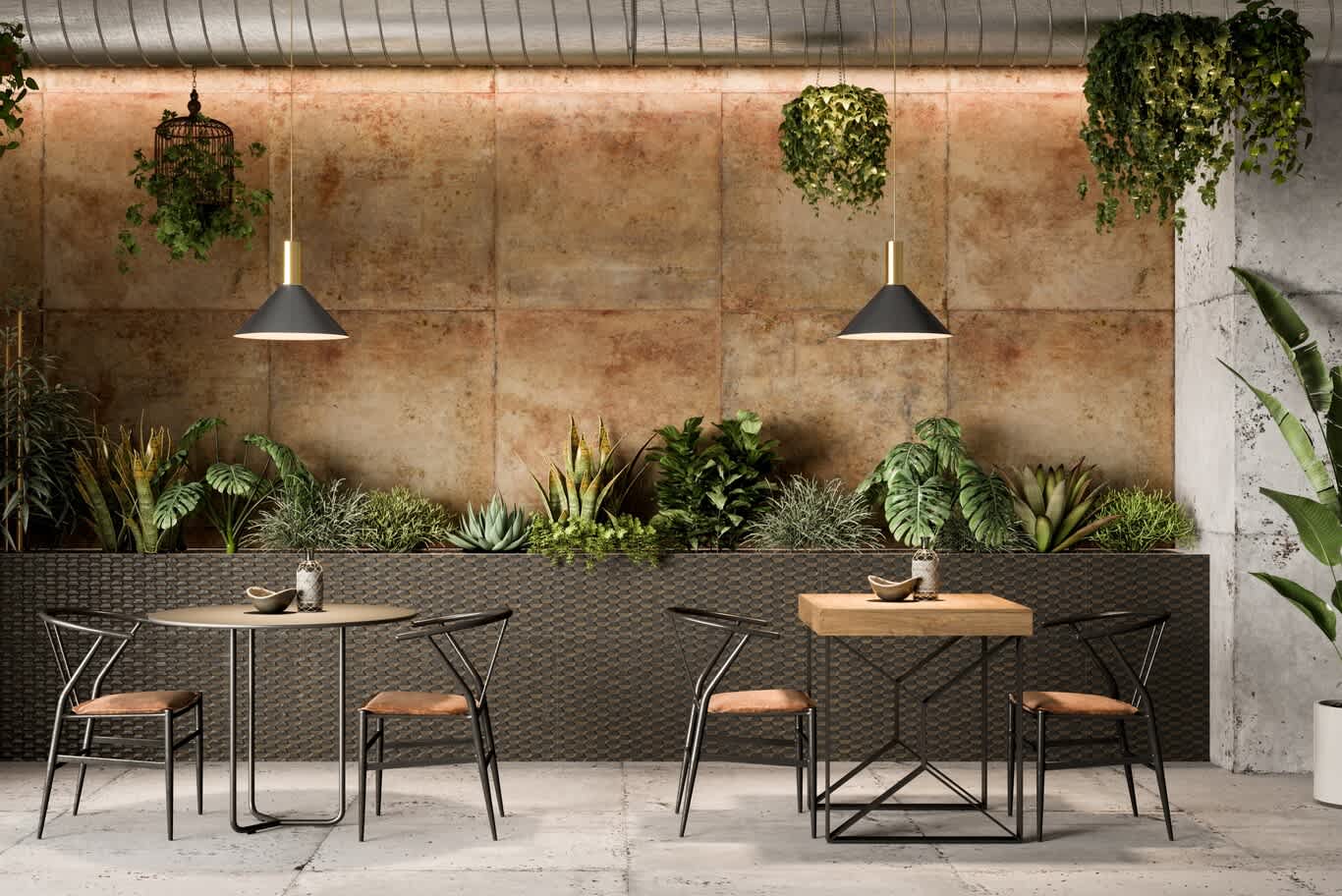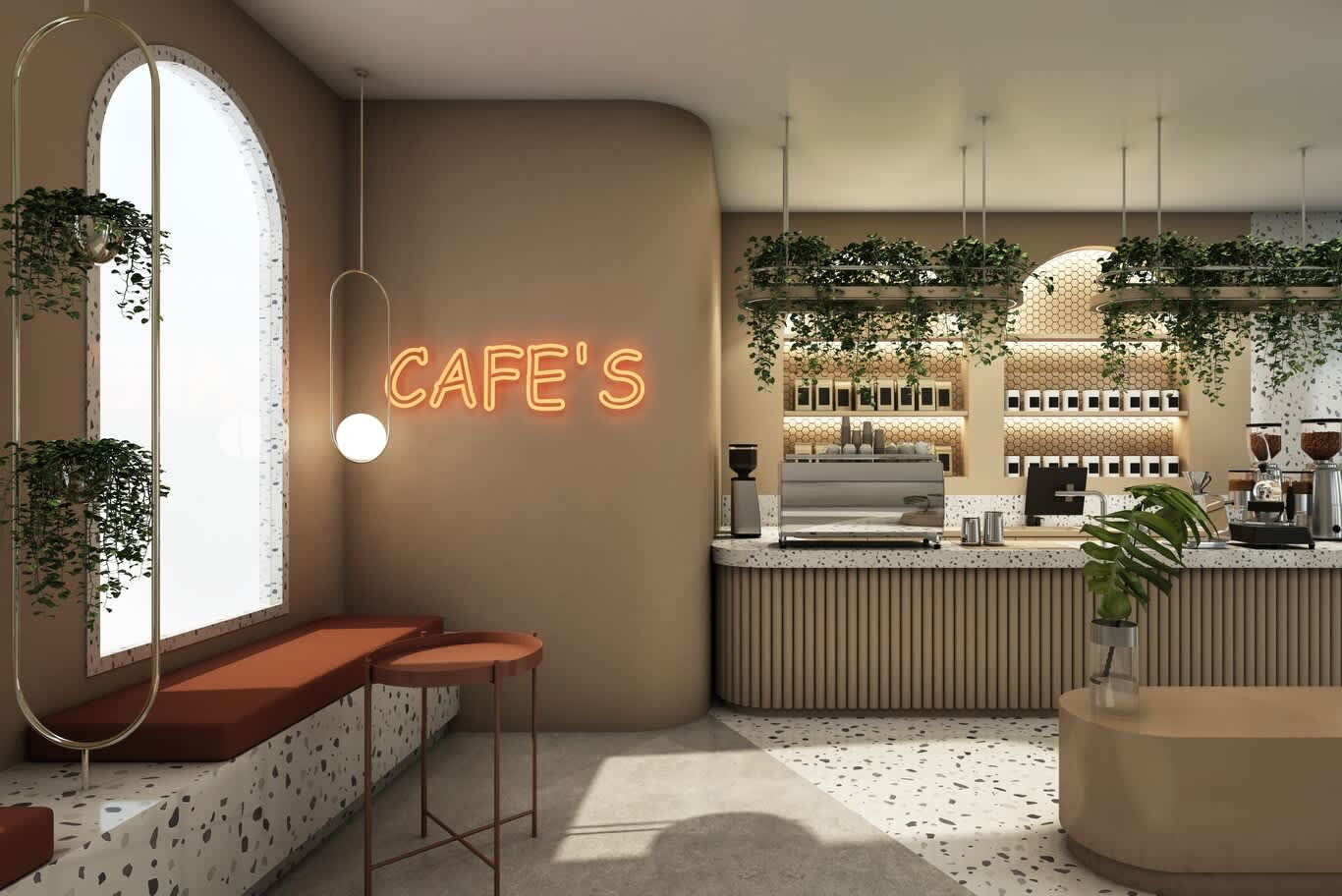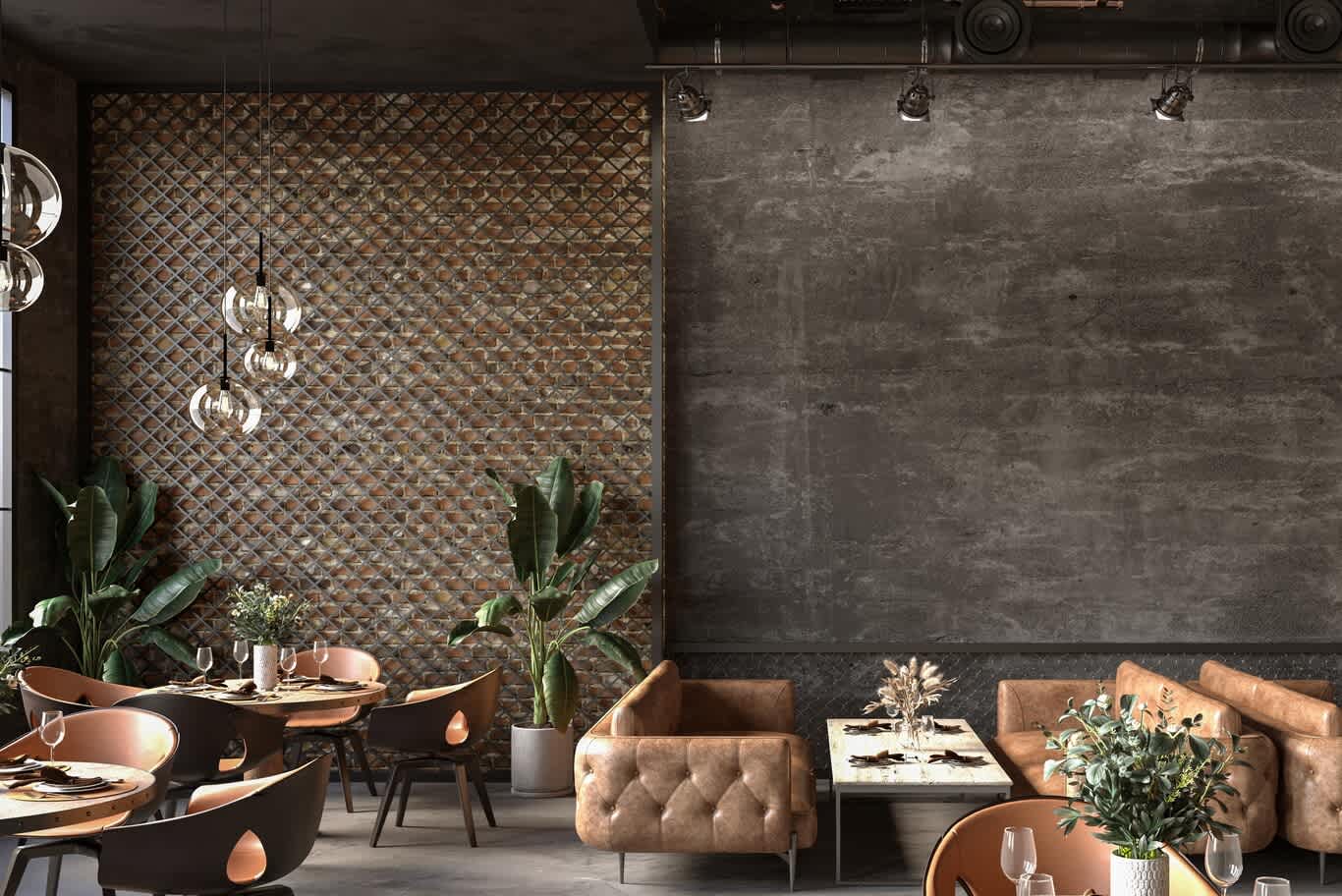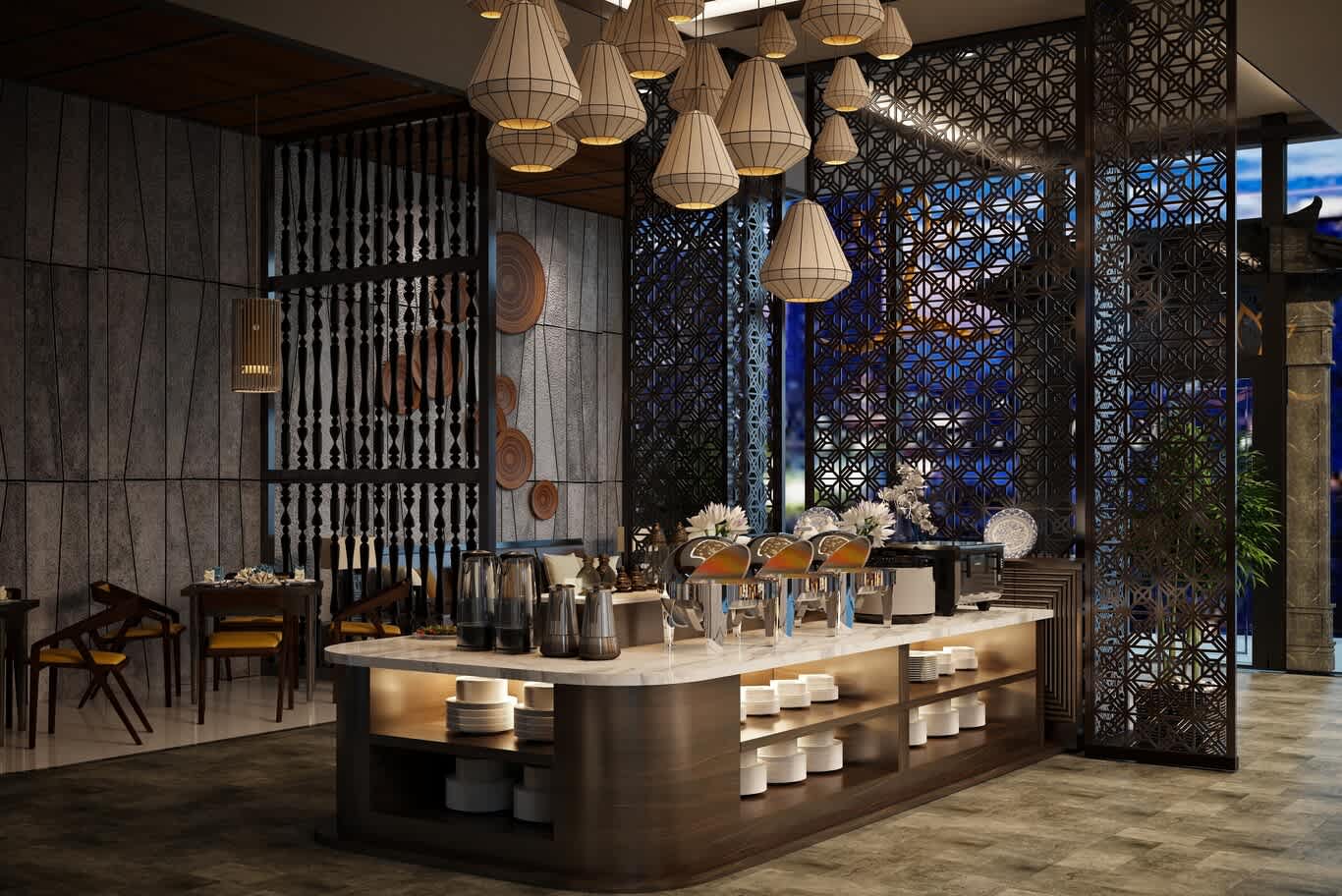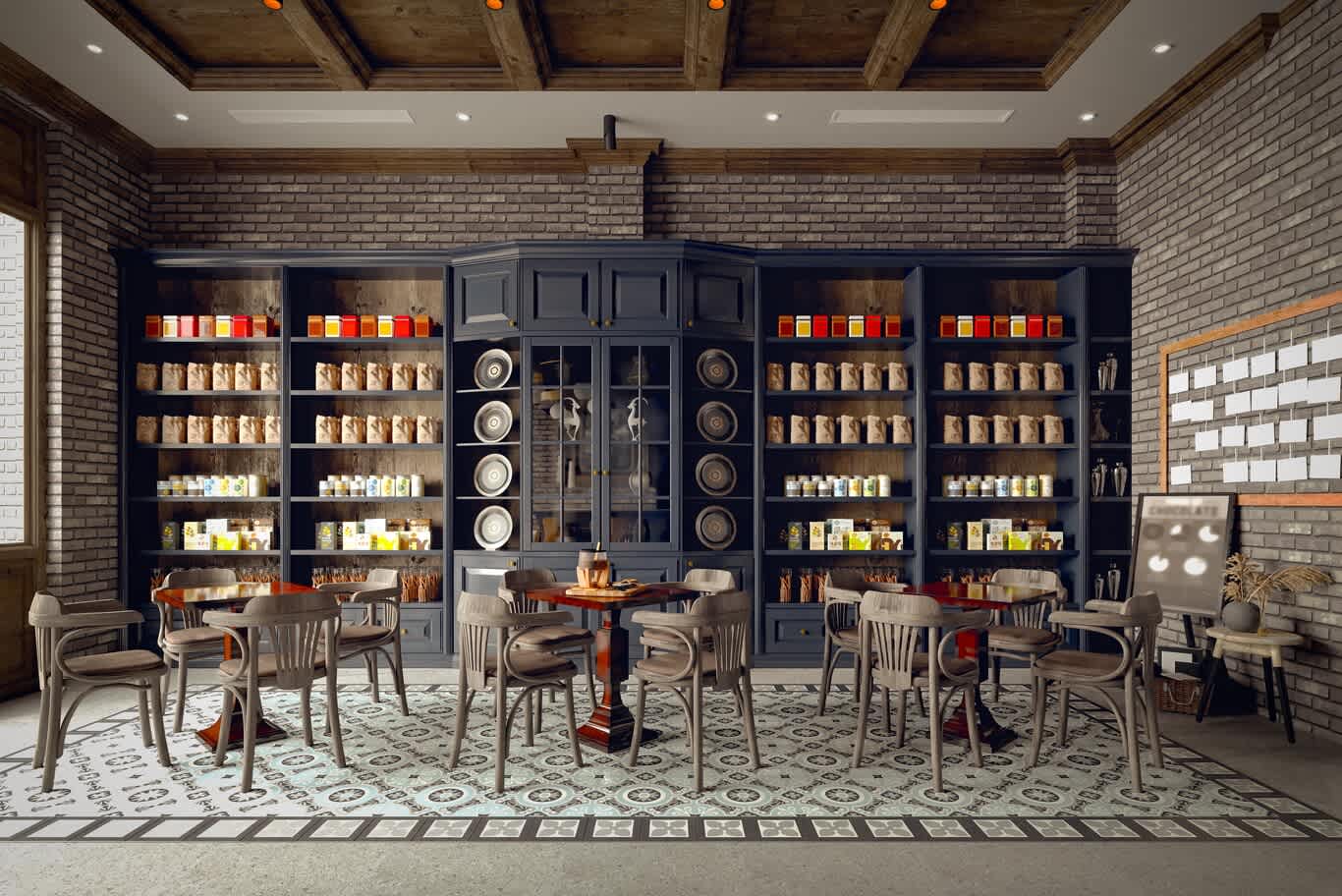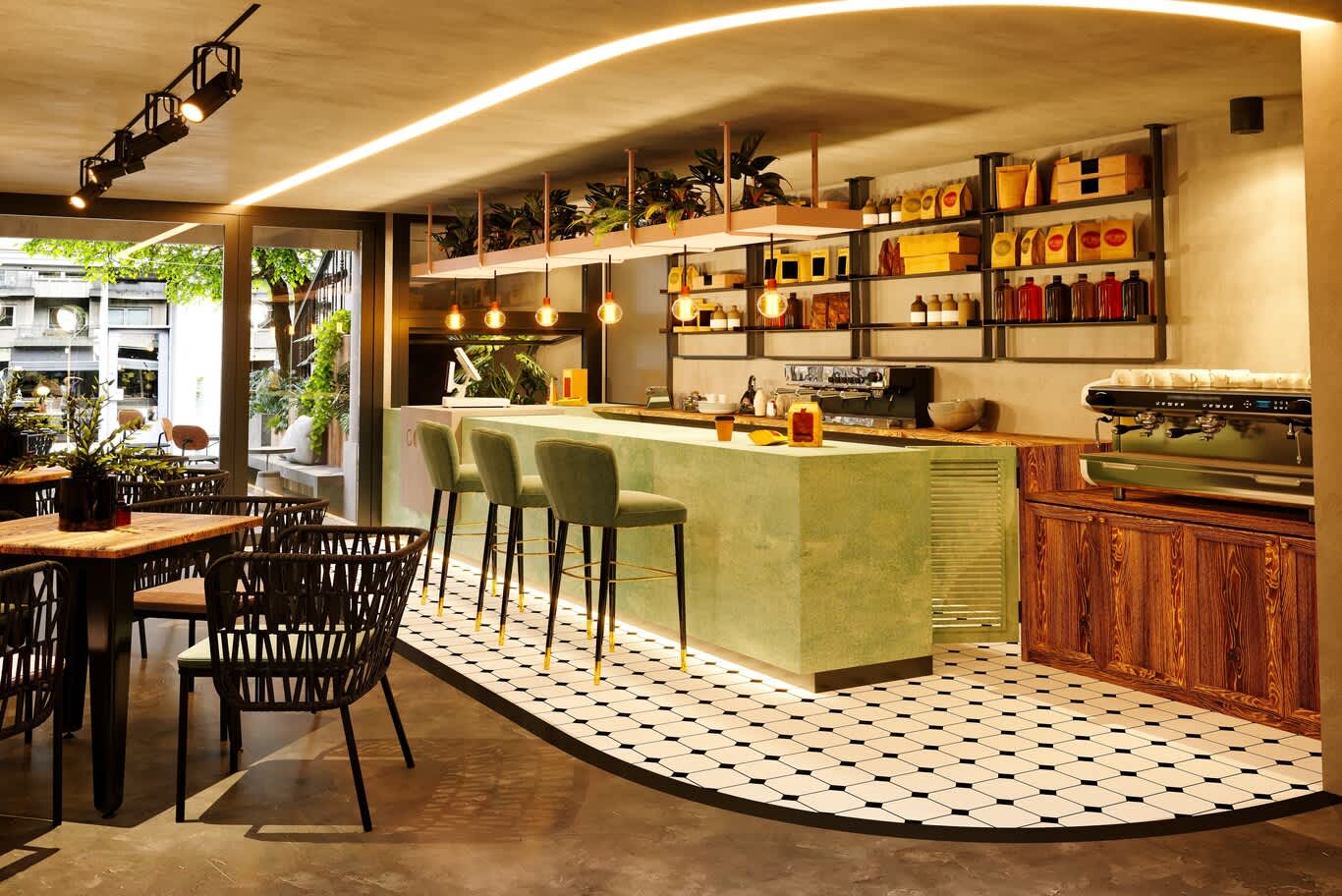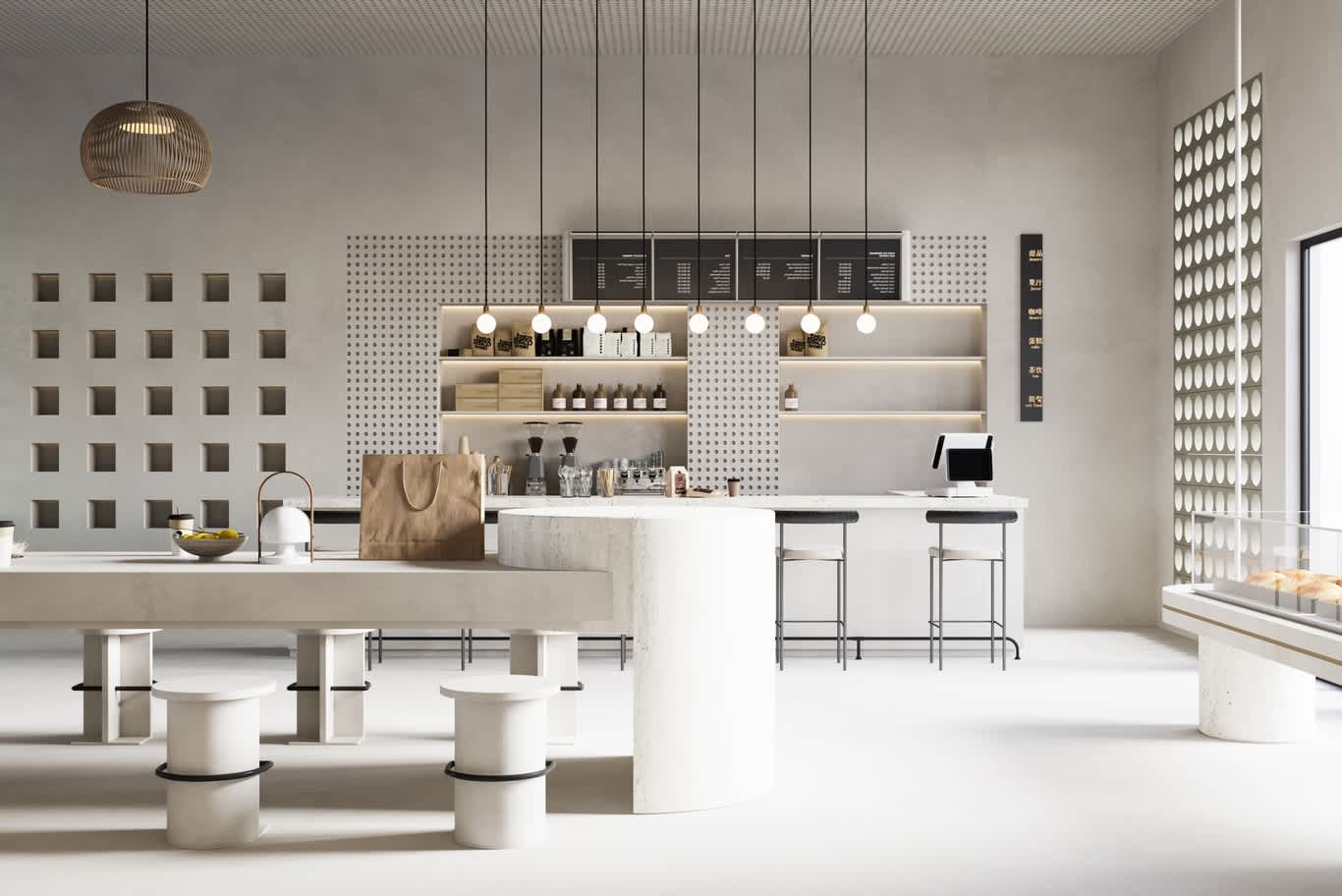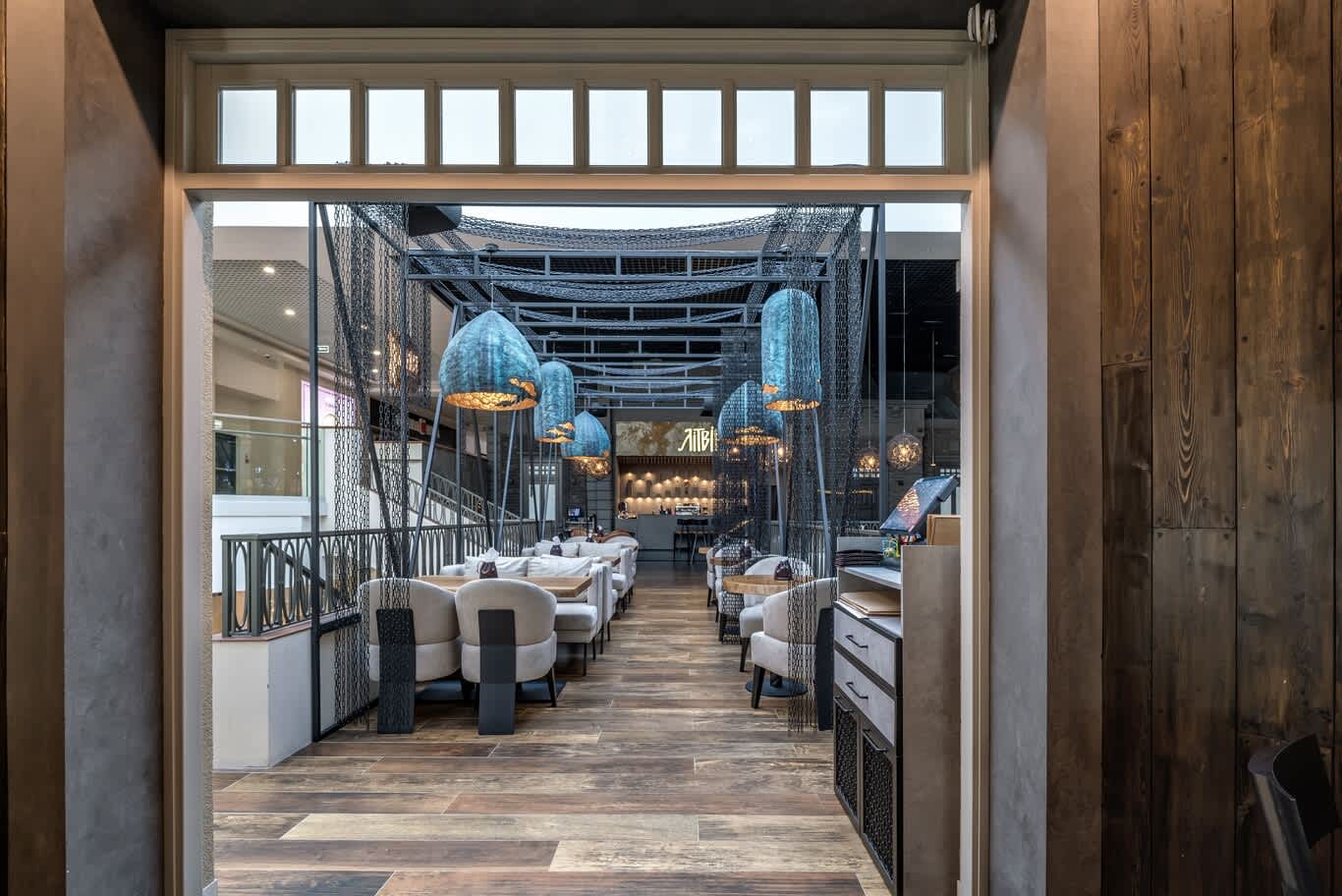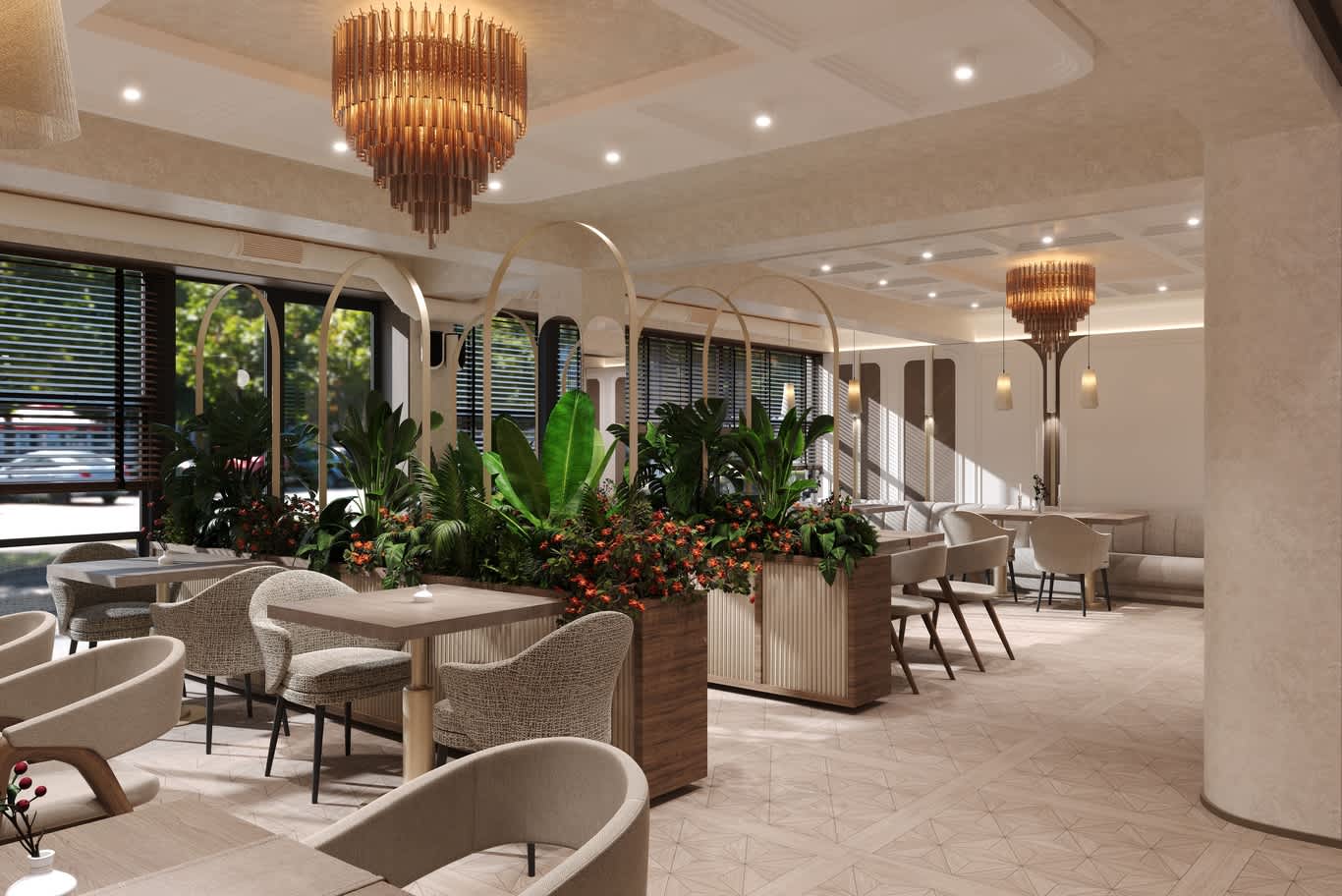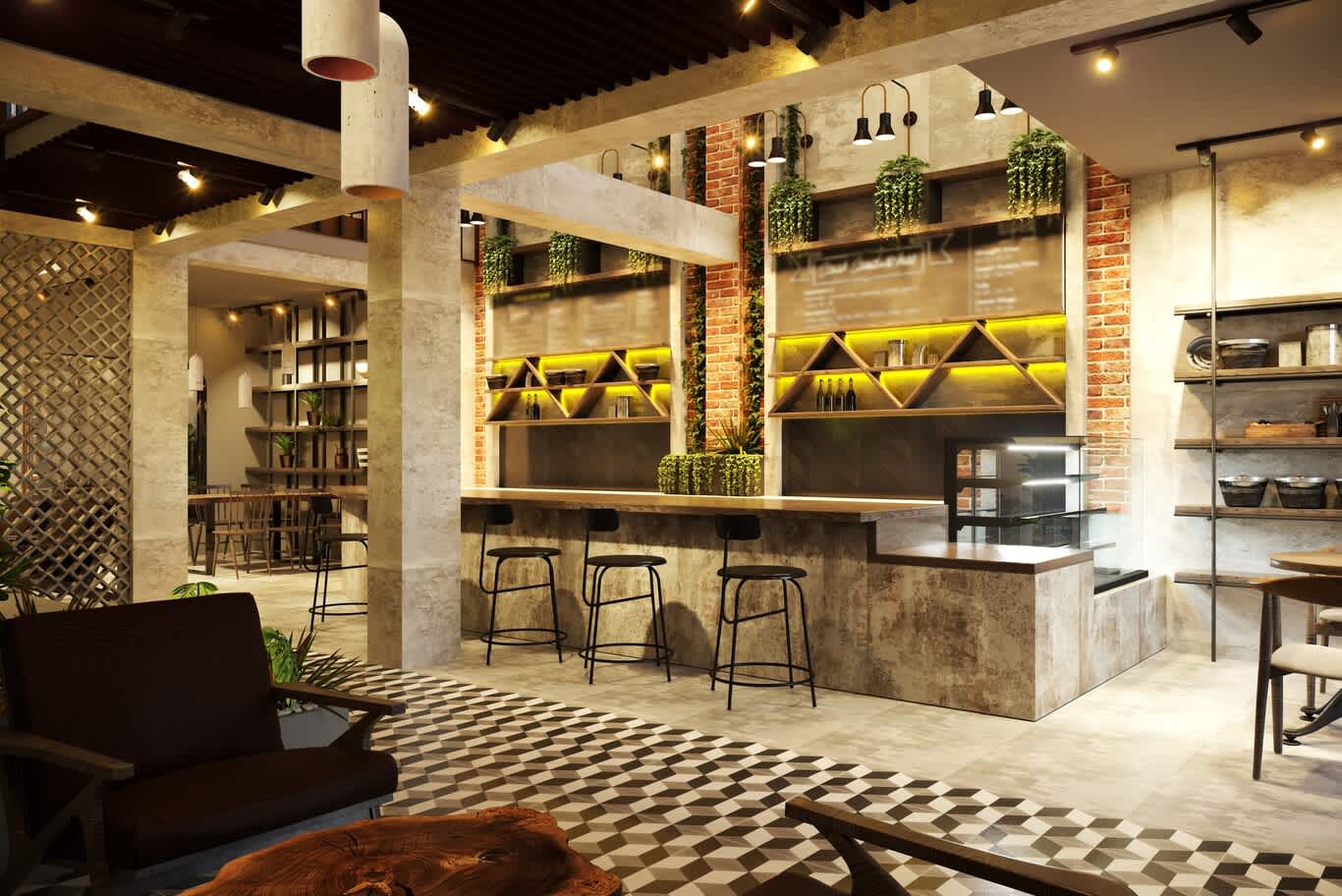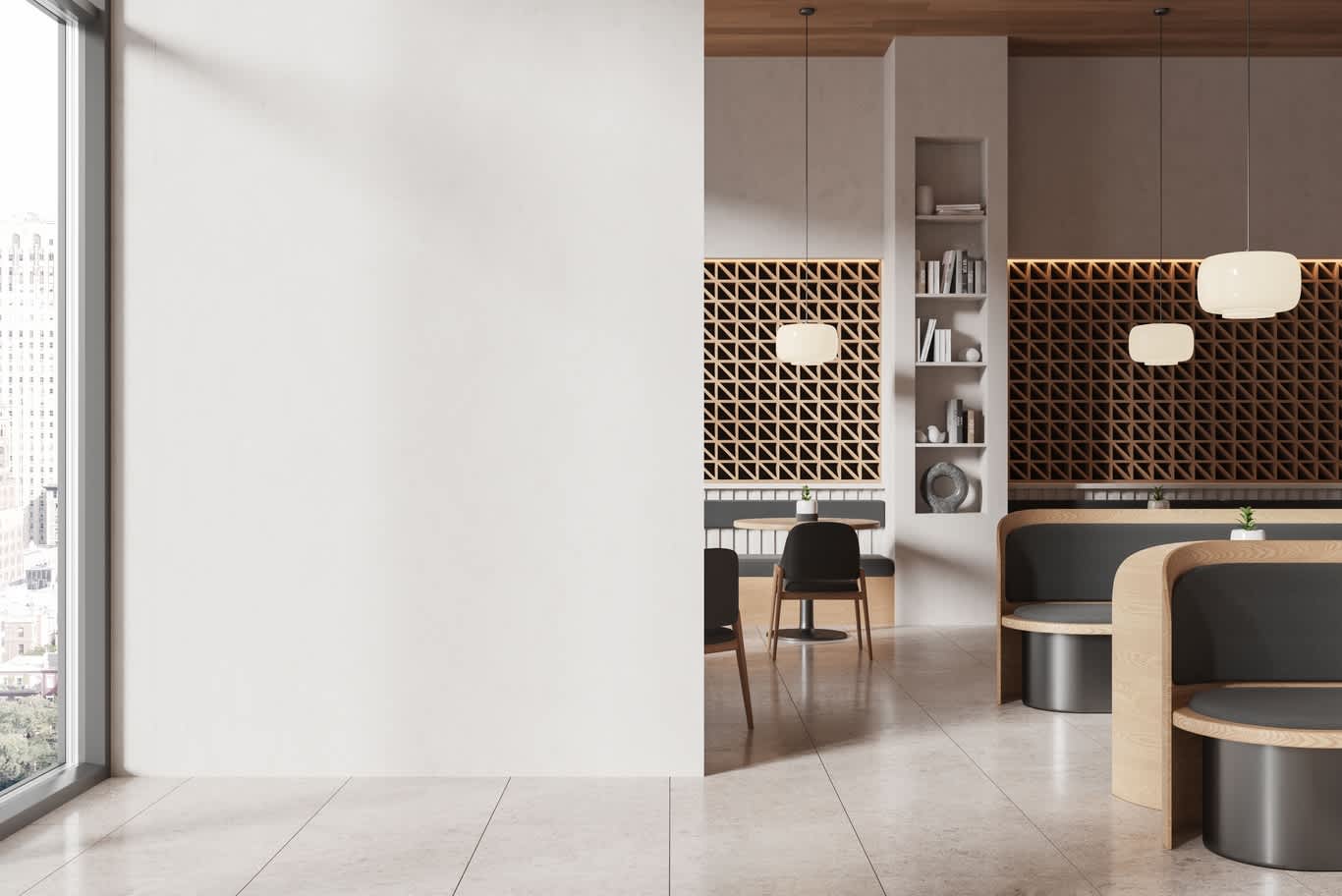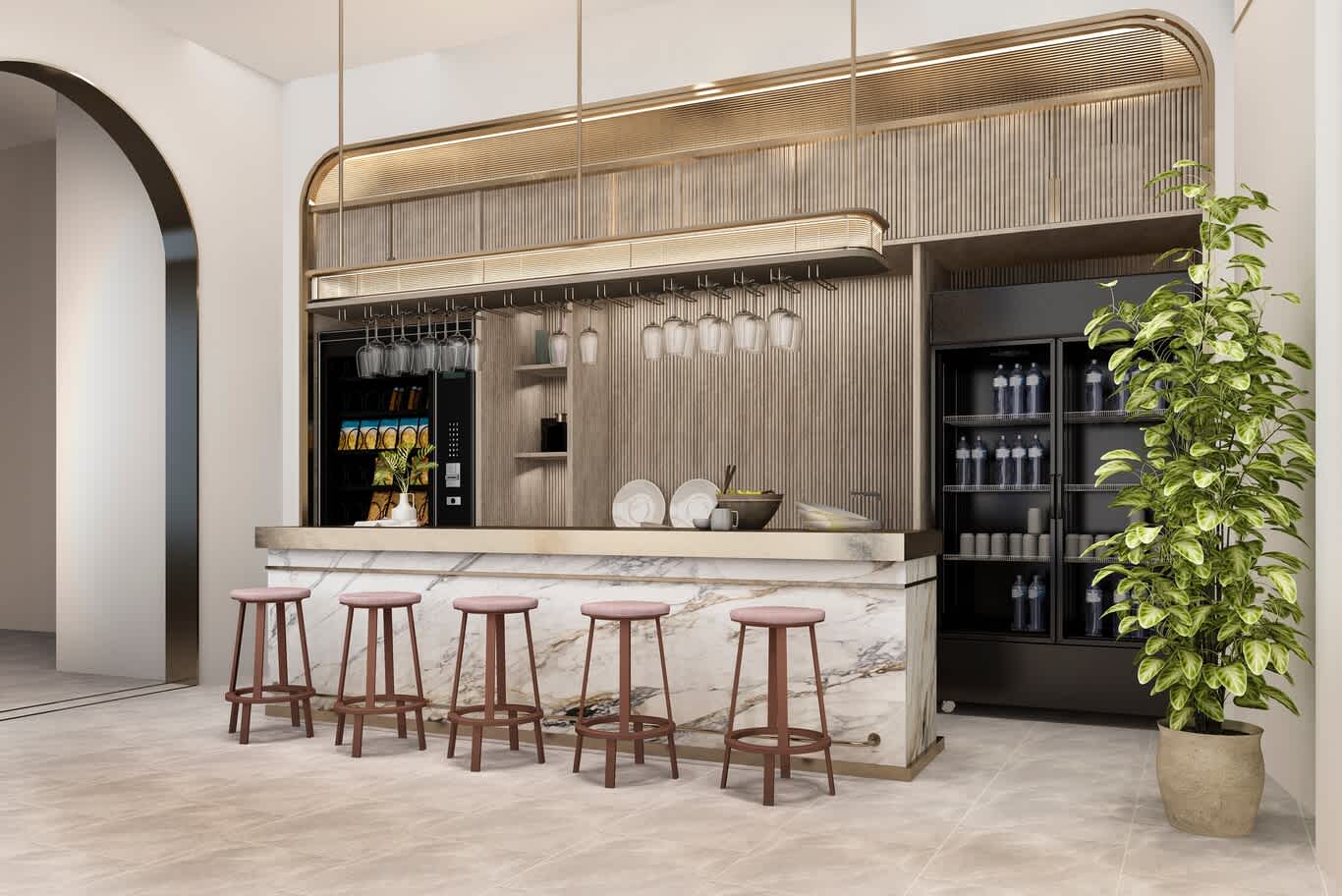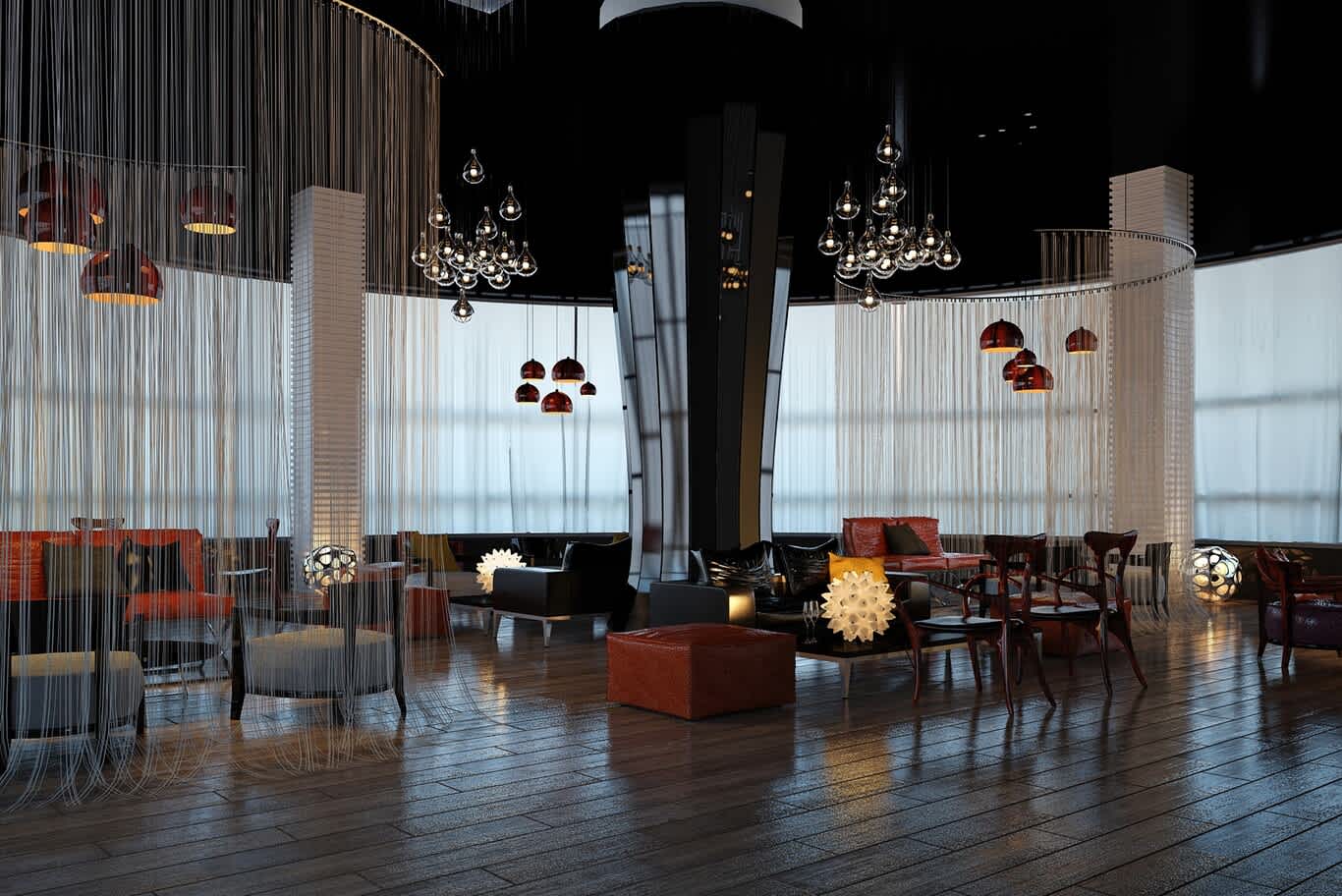Home Page | Blog | Café Interior Design Guide
Café Interior Design Guide
10/23/2025
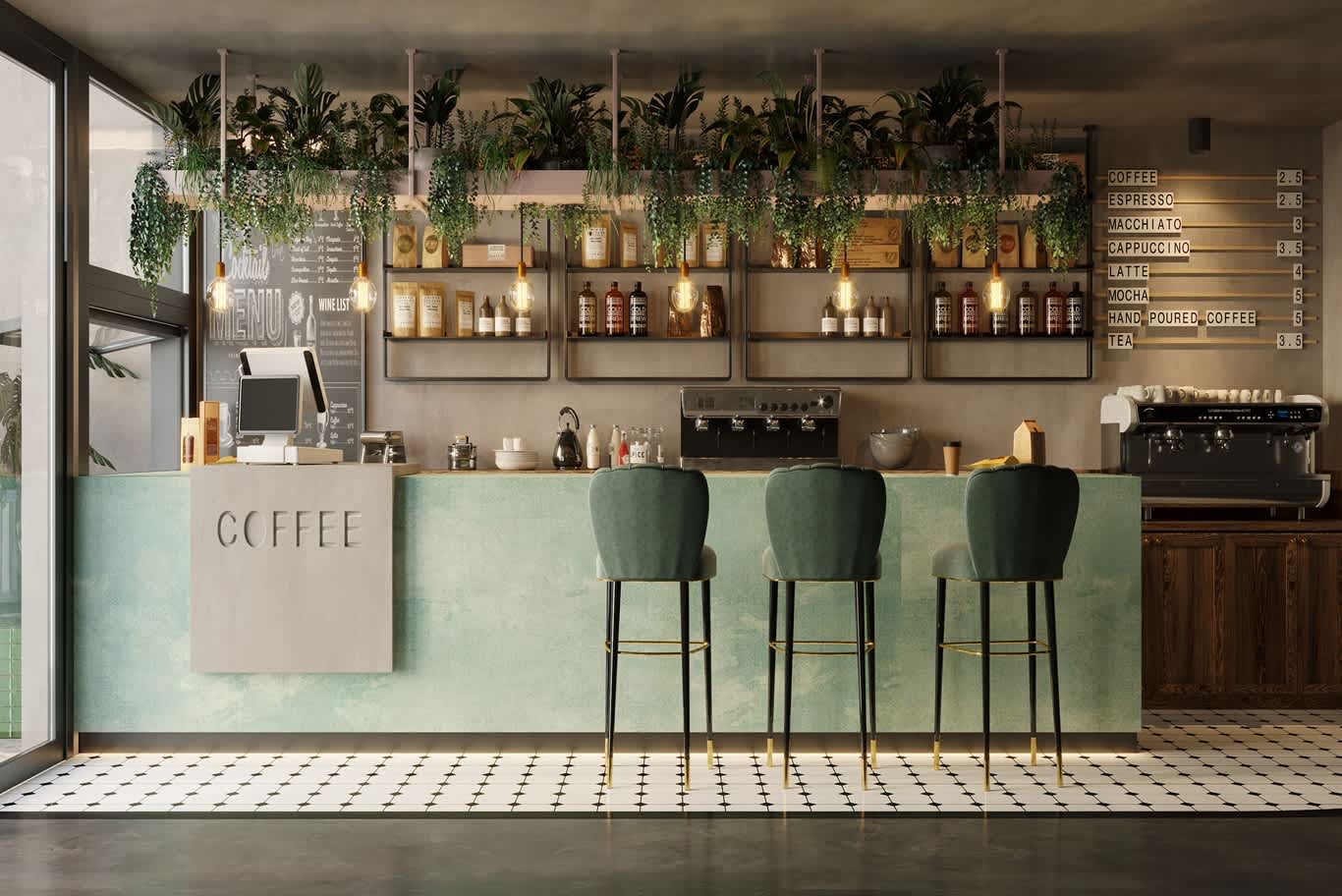
Cafés have influenced city life for centuries. Originating in the Ottoman Empire, they evolved into cultural centers across Europe where people gathered to talk, read, and observe. From the elegant marble cafés of Vienna to the lively terraces of Paris, each era shaped its own version of social space.
Modern cafés continue this role as places that combine comfort, order, and design intent. Every decision—from the counter layout to lighting and materials—defines how people experience time, movement, and atmosphere inside.
Learn more about cafe interior design and its history.
A Brief History of Café Culture
Coffeehouses began in the Middle East and Ottoman world as early as the 15th–16th centuries, functioning as social hubs where people met to talk, play games, and exchange news. Mecca had qahveh khanehs in the 1400s; Istanbul followed in the 1500s, and the “public living room” DNA of today’s cafés traces back to these venues.
From there, the model spread across Europe. Vienna turned the coffeehouse into a civic institution from the late 1600s onward; by the fin de siècle it was a magnet for politicians, artists, and writers, with newspapers on racks and a culture of long, unhurried visits. UNESCO later listed Viennese coffeehouse culture as part of Austria’s intangible cultural heritage.
Parisian cafés then amplified the creative angle: the 19th–20th centuries saw cafés double as workplaces and salons for artists and thinkers—from Impressionists observing street life to writers debating ideas. This link between café, creativity, and conversation still fuels the “third place” value modern customers seek.
In the 2000s, “third-wave” coffee reframed the café as a transparent stage for sourcing, roasting, and brewing: lighter roasts, more visible bar operations, and interiors that put the craft of preparation at eye level. Whether you adopt that motto or not, the design implication is clear: customers respond to spaces where the coffee-making process is legible and the environment supports both quick stops and longer stays.
1- Start with the operational spine: plan the bar, then the room
Design fails when the bar is an afterthought. Your service model (order-at-counter, hybrid, or full service) dictates circulation, queueing, and seating density. A well-planned counter reduces bottlenecks and increases capacity without extra staff: arrange stations in task order (order → grind/extract → steam → finish → pass), keep steps tight, and ensure a straight “reach-turn-place” flow for baristas. Research and industry guidance consistently tie layout to wait-time reductions and consistency of output.
Queue design deserves the same attention. Give sightlines to the menu before the order point, show pastry and retail within reach, and prevent the line from cutting through seated zones. A shallow S-curve or parallel queue along the bar keeps people moving while letting them watch drinks being made, which reassures them about progress and may increase average ticket via visible add-ons.
2- Zoning the room: dwell time by intent
Think in zones, not just seats, and decide explicitly which parts of the room are about quick turnover and which parts invite longer stays.
● Grab-and-go belt near the door: perches, leaning rails, and two-tops at 600–650 mm depth for short visits. Keep this band bright and energetic.
● Work/study bay deeper in the plan: four-tops and communal tables with power, glare-controlled light, and reduced foot traffic.
● Conversation clusters offset from the queue: small sofas or upholstered chairs around low tables, spaced to avoid back-to-back crowding.
A machine-learning study on seating optimization underscores that static “rule of thumb” layouts underperform; observe your actual flow and iterate. In short: treat the plan as a living system, not a fixed diagram.
3- Accessibility isn’t optional (and it’s good design)
Build inclusivity into the layout from the first sketch. In the U.S. context (and as a solid baseline elsewhere), plan for at least 5% accessible seating (minimum one spot), distribute it across zones, provide 30″×48″ clear floor space at those positions, keep accessible table surfaces ≤34″ high, and maintain 36″ clear routes to seating. Include proper knee clearance (≥27″ high × 30″ wide × 19″ deep). These dimensions make circulation smoother for everyone, including strollers and trolleys.
4- Light: set levels by task, not guesswork
Don’t wing it on lighting. Aim for approximate illuminance targets by zone:
● Dining/seating: ~150–200 lux average
● Bar counter: ~200–300 lux (you need clarity on drink prep and display)
● Back-of-house/production: ~500 lux
These numbers are common hospitality references and keep you in a comfortable, readable range. If you prefer imperial units, 30–50 foot-candles is a typical band for general hospitality, depending on mood and scale. Layer ambient, accent, and task light; avoid downlight grids over tables that create facial shadows, and use wall washers or low-glare pendants to avoid hotspots in photos and laptops.
5- Acoustics: design for conversation and concentration
Great cafés manage noise. Two core metrics matter:
● STC (Sound Transmission Class): how assemblies block sound between spaces.
● NRC (Noise Reduction Coefficient): how materials absorb sound within a room.
You’ll use NRC to tame reverberation (ceiling clouds, baffles, upholstered surfaces) and STC to keep restrooms, kitchens, or neighboring tenants from bleeding into the room. Typical NRC figures: drywall/glass ≈ 0.05 (reflective), carpet/upholstery ≈ 0.25–0.45, acoustic panels/clouds ≈ 0.80–1.00. Mix high-NRC elements high in the section (ceilings) with strategic soft surfaces at ear height. Keep an eye on the Lombard effect: as background noise rises, people talk louder, creating a feedback loop. Breaking that loop increases satisfaction and dwells without changing the music volume.
6- Surfaces and furniture: durability, comfort, and speed
● Table sizes: for two people with laptops and drinks, 700–750 mm square works; depth under 600 mm feels cramped.
● Edges: eased or bullnose edges wear better and feel nicer to lean on during long sessions.
● Chair mix: armless wood or metal near the counter for quick turns; upholstered with supportive backs in deeper zones; bar stools with footrests along windows to activate the perimeter.
● Flooring: avoid hard, glossy surfaces wall-to-wall; combine durable hard flooring with area rugs or acoustic underlay to lower RT60 (reverberation time).
● Workstations: specify anti-fatigue mats behind the bar and maintain 900–1050 mm counter heights to balance ergonomics with customer sightlines.
7- Power, Wi-Fi, and policy signaling
If you invite remote work, say so with the plan: run power in furniture (grommets or under-table rails) and walls (continuous plug strips under the bar ledge), and place a few “quiet” two-tops away from the line of fire. If not, keep outlets sparse near small tables and emphasize communal tables with center power to consolidate laptop users. Either way, keep messaging consistent on cards and menu boards to avoid mixed signals.
8- Menu visibility and merchandising
Mount the primary menu where guests can read it while queuing—ideally 3–4m before the POS. Supplement with a low, wide pastry case that aligns to customer flow (not perpendicular to it). Retail shelving belongs near, not behind, the queue so browsing doesn’t block circulation. A narrow credenza at the exit for lids, sugar, and pickup reduces counter congestion.
9- Color and material palette
Pick one dominant warm material (timber, plaster, brick) and one cooler counterpoint (concrete, stone, metal). Too many finishes create visual noise and raise cleaning complexity. Use a limited accent band at hand height (e.g., dado tile) to handle scuffs. If you prefer to celebrate production, keep the bar lighter in tone so equipment and movement read cleanly to the eye; if you prefer a calmer reading zone, push darker finishes to the back and keep the seated areas lighter for visibility in photos and screens.
10- Branding without shouting
Apply brand elements where touch happens: cups, sleeves, pastry labels, loyalty cards, small neon or vinyl at the window. Resist saturating walls with graphics that age quickly. A single, well-placed sign at entry and a consistent typographic system on menu boards signal confidence without visual fatigue.
11- Music and soundscapes
Keep speakers off the hard ceiling plane to avoid slapback; use more, smaller speakers at lower gain rather than a few loud ones. Align playlists to dayparts: brighter tempo during morning rush, softer and more spacious selections mid-afternoon. Combine this with the acoustic strategies above to keep overall SPL in the 70–80 dB range during peak, which supports conversation.
12- Case-study takeaways (history to present)
● Vienna: seating meant for lingering, newspapers, and an “anyone can arrive alone and stay” ethos—useful for your deep-stay zones today.
● Paris: café as creative workplace and public gallery; window seating and terrace edges that feed on street life still work in urban contexts.
● Third-wave venues (global): visible preparation, unfussy details, and clean bar geometry that make the making part of the guest experience.
● Blue Bottle example: compact service stages, transparent panels, and outdoor spillover space in dense districts; adaptive reuse in heritage buildings with careful leveling of thresholds for accessibility.
13- Lighting kit of parts (fast spec notes)
● Ambient: ceiling surface or pendant fixtures delivering your 150–200 lux baseline at table height.
● Task: linear under-shelf or track at the bar to reach 200–300 lux for production.
● Accent: wall washers for art or texture; tightly controlled beams at pastry and retail.
● Glare control: matte diffusers, louvers, and lower CCT options (2700–3000 K) in the seating zones, with slightly higher CCT (3000–3500 K) at the bar for clarity.
Tie this back to measurable numbers instead of mood boards.
14- Acoustic kit of parts (fast spec notes)
● Ceiling: 30–60% coverage with acoustic clouds/baffles in high ceilings.
● Walls: fabric-wrapped panels or micro-perforated wood behind seating to catch early reflections.
● Soft goods: at least 30% of seats upholstered; rug islands under lounge clusters.
● Materials: combine low-NRC (glass, tile) with high-NRC (panels, felt) to hit a balanced RT60; remember NRC ≠ STC.
15- Operations x design: the daily reality check
● Sightlines: Staff should see the door, queue, and pickup shelf without moving.
● Hand-off shelf: put finished drinks at least 1 m away from the POS to prevent crisscrossing.
● Condiment station: off the bar; 900 mm counter height with waste access underneath to avoid clutter.
● Cleaning: smooth transitions between floor materials, coved bases in wet zones, and durable grout.
● Iteration: measure order-to-hand-off time during a rush before and after layout tweaks; small gains add up. Evidence from operations research shows that modest layout adjustments can yield meaningful service-time improvements.
16- Putting it all together: a sample flow
Entry & queue: menu legible at 3–4 m; pastry case and retail along the queue.
Order & pay: POS with clear pickup instructions; bar behind in task order.
Pickup: perpendicular shelf with space to pause; condiment station beyond.
Seating: quick-turn band near the front; deeper work and conversation zones farther in; accessible seating distributed.
Perimeter: window ledge seating activates the façade and adds capacity without crowding.
Back-of-house: direct path to waste and storage so staff never wheel bins through guests.
17- Lessons from 300 years of café culture
The best cafés still do what Ottoman, Viennese, and Parisian venues did: enable unhurried conversation, casual work, and people-watching—while today’s operators also need speed, consistency, and clear brand cues. Get the bar right, zone by intent, light by task, tame reverberation, and design accessibility from day one. History sets the template; your plan turns it into a profitable, modern room.
Quick reference (save this):
● Lighting: 150–200 lux seating; 200–300 lux bar; ~500 lux prep.
● Accessibility: ≥5% accessible seating; 36″ routes; 27″ knee clearance; ≤34″ table height; 30″×48″ clear space.
● Acoustics: use high-NRC ceilings/walls; remember STC is for isolation, NRC for absorption; typical NRCs—glass 0.05, carpet/upholstery 0.25–0.45, acoustic panels 0.8–1.0.
● Workflow: sequence the bar; minimize turns and reaches; separate pickup and POS; track wait times and iterate.
Summary and Key Takeaways
From old Istanbul coffeehouses to current minimalist cafés, one quality endures: hospitality through design. Design matters because it shapes how people behave, how long they stay and whether they return. A thoughtful interior will consider layout, lighting, materials, sound, brand cues and guest needs.
History shows that cafés have long been places of meeting and pause. Good design leverages that heritage while meeting today’s demands for comfort, connectivity and flexibility.
If you are designing a café now consider: where guests arrive, what they do once seated, how the bar works behind the scenes, how sound travels, how comfortable people feel. Address those and the rest—the stylistic flourishes, the finishes, the branding—become enhancements to a sound structure.
Contact Us
Ready to create a café that people remember?
Contact our interior design team to plan a distinctive, comfortable, and lasting space customized to your brand.
Café Interior Design Company FAQ
1) How much does a café interior design and fit-out cost?
Costs vary by city, scope, and finish level. Luxury projects can exceed specific cost ranges. Always calibrate estimates to local pricing.
2) How long does a café project take from design to opening?
Typical timelines run several months. Planning and site selection can add one to three months. Design and build-out commonly take two to six months, with many coffee businesses opening within six to twelve months from initial planning. Local approvals and landlord reviews affect the schedule.
3) What does a professional interior design company deliver for cafés?
Common deliverables include site survey, concept and spatial layouts, materials and finishes, lighting plans, furniture and equipment specifications, technical drawings, and construction coordination through handover. Many firms align with the RIBA Plan of Work stages from brief to use, which clarifies roles and milestones.
4- What costs should I expect when hiring a café interior design and fit-out company in Dubai or Abu Dhabi?
In the UAE market, companies offering turn-key café fit-outs list full design-to-build services. For example, one Dubai company advertises “complete café fit-out design services” including layout, custom furniture and end-to-end project delivery.
5- How do I choose the right interior design company for my café, whether in Dubai, the UAE or abroad?
Look for a company with: a portfolio of café or hospitality projects; experience in the local region (Dubai/UAE if relevant); clear process for design and fit-out; transparent fee structure; strong references and record of delivered projects. For example, UAE‐based designers advertise “custom café design in Dubai … complete turnkey solutions”.
6- What service model and budget categories should I plan for my café project with a design company?
Define: desired guest count, service style (grab & go, café-lounge, workspace friendly), finish level (standard, premium, luxury), and international vs local sourcing. These parameters drive the fee to the design company and the build-out cost. Ask for clear phases and stage fees.
7- How important is brand integration in café interiors when hiring a design firm?
Very important. A firm should support your brand identity through material selection, furniture styling, lighting design and spatial experience.
8- What timelines and risk factors should I expect when engaging a café interior design company in the UAE or elsewhere?
Common risk factors: permitting and landlord approvals, supplier lead-times (especially for custom furniture or imported finishes), coordinating international logistics, site supervision delays, and local contractor performance. Pre-defining milestones, procurement deadlines and contingency plans with your design firm reduces these risks.
9- How many weeks should I allow for construction once drawings are ready?
Commercial fit-outs often run four to sixteen weeks depending on scope, size, and permit cycles. Build in time for inspections and punch list.
10- How early should I hire a café interior design company?
Hire at the feasibility or site shortlisting stage. Early involvement reduces layout changes, avoids expensive service relocations, and speeds approvals. Coffee shop planning resources and fit-out timelines show smoother delivery when design begins before lease signing.
FREE
CONSUL
TATION
FREE CONSULTATION
TELL US ABOUT YOUR PROJECT
WE WOULD LOVE TO HEAR FROM YOU
Feel free to reach us via this contact form and one of our Design Consultants will get back to you at earliest.
OUR BRANCHES
UAE - DUBAI
+971 52 8111106 | hello@algedra.ae
TURKEY - ISTANBUL
+90 533 701 89 71 | info@algedra.com.tr
Leading Interior Design and Decor Company in Dubai and Abu Dhabi.
Algedra is a reputable, internationally recognized, and one of the most successful interior design companies in Dubai, and Abu Dhabi, which specializes in delivering interior design, architectural, and creative space planning projects throughout GCC, MENA, North Africa, Turkey and Russia.
Algedra is a one-stop solution for all your residential interior design and fit-out needs. We have successfully completed numerous villa interior and exterior design projects, where we integrated quality and originality to deliver interior masterpieces.
ALGEDRA, Interior Design Company in Dubai, is specialized in providing elegant and stunning interior design services for both residential and commercial projects. We turn our clients' dreams into reality, trans- lating their tastes and needs into beautiful and functional spaces.
Since the day we were founded, we have designed and built many branded residences, resorts, hotels, multi-purpose social spaces, and palace designs with different functions and concepts by following the ever-changing design trends over the world.
A key element of our work is a fusion of different cultures and designs, combining Greek, Italian, Eastern and Western influences with British innovation.
As a team of highly qualified interior designers and engineers, Algedra offers complete architectural services from mall design to corporate office design as well as the exterior design of any project based on customers' needs.
Our customers include leading names, we have completed diverse projects in hospitality, landscape, commercial, and residential designs. These projects contain cafes, restaurants, gym, villas, family sitting rooms, bedrooms, kitchens; all showcasing our company's exquisite details and high-end designs.
Residential Interior Design in Dubai
Algedra's interior designers and architects have an important mission: building villas, houses, apartments, condos, and anywhere else where you reside that will fulfill your needs while being structurally safe and sound.
Architectural Designs
There are so many details that go into designing an architectural design project. Every step of the project has been carefully considered for safety and daily comfort by Algedra's experts.
Commercial Design
Conceptualizing spaces for business, to elevate style, and to increase functionality to help enhance the bottom line of a company is vital, as well as employee comfort and interior design too. Our commercial interior designers translate client's concept in ways that are efficient, attractive and provide professional workspaces.
Fit-out Projects
Algedra Interiors delivering high-quality tailored fit-out projects that transform your villas, palaces and commercial spaces.
We're a passionate team of interior designers, architects and engineers. Every day we help clients to solve interior design problems and create engaging spaces!
Wherever you are in Kuwait, Saudi Arabia, Azerbaijan, Qatar, Morocco, Algeria, Tunisia, Libya, Egypt; don't hesitate, contact us to find out more about why we are one of the best interior design companies in Dubai and Abu Dhabi!
